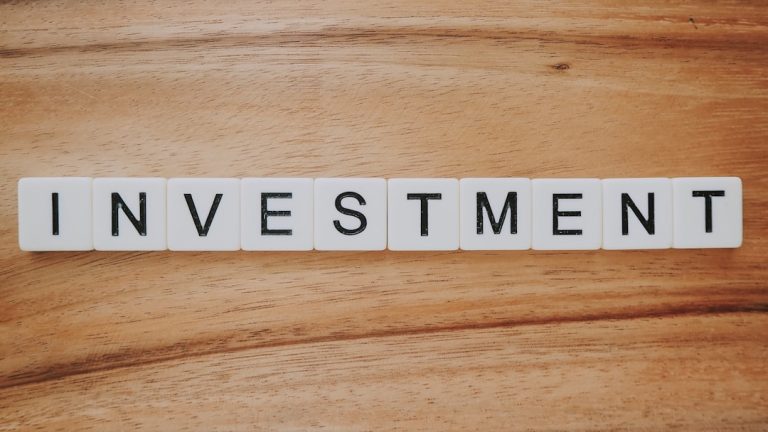Meta Description: Unlock the potential of tax-efficient investment tools with our comprehensive guide for high earners. Discover strategies to save taxes and build wealth effectively.
Introduction
For higher earners, optimizing investments to minimize tax liabilities is essential for maximizing wealth accumulation. Tax-efficient investment tools not only help retain more of your hard-earned income but also enhance long-term financial growth. This comprehensive guide delves into the most effective tax-efficient investment tools, strategies, and examples tailored for high earners seeking to build their wealth while minimizing tax burdens.
What is Tax-Efficient Investing?
Tax-efficient investing involves structuring your investment portfolio to reduce the amount of taxes you owe, thereby maximizing your net returns. For high-income individuals, this means using specific instruments and strategies to shield income, investment growth, and dividends from excessive taxation. Key components include:
- ISAs (Individual Savings Accounts): Provide tax-free growth and withdrawals.
- Pensions: Offer tax relief on contributions and tax-deferred growth.
- SEIS/EIS (Seed Enterprise Investment Scheme/Enterprise Investment Scheme): Grant significant tax reliefs for investments in startups.
By leveraging these tools, high earners can grow their wealth in compliance with tax laws while preserving more of their assets.
Benefits of Tax-Efficient Investment Tools
Utilizing tax-efficient investment tools offers numerous advantages for higher earners:
- Reduced Tax Liabilities: Lower the amount of tax paid on income, capital gains, and dividends.
- Enhanced Portfolio Growth: Reinvesting tax-free returns accelerates wealth accumulation.
- Asset Protection: Strategies like trusts help in safeguarding assets for future generations.
- Compliance and Planning: Ensures investments are structured within legal tax frameworks, avoiding penalties and leveraging available reliefs.
Top Tax-Efficient Investment Tools for Higher Earners
1. Pensions
Pensions are one of the most tax-efficient vehicles for retirement savings. Contributions receive tax relief, effectively reducing your taxable income. The investments within your pension grow tax-free, and you can access a tax-free lump sum upon retirement.
2. ISAs (Individual Savings Accounts)
ISAs offer tax-free growth on investments and tax-free withdrawals. With an annual contribution limit, they are ideal for both short-term and long-term savings. Options include Cash ISAs, Stocks & Shares ISAs, and Lifetime ISAs.
3. SEIS/EIS (Seed Enterprise Investment Scheme/Enterprise Investment Scheme)
These schemes provide substantial tax reliefs for investing in UK startups. SEIS offers 50% income tax relief on investments up to £100,000, while EIS offers 30% relief on investments up to £1 million. Both schemes also offer capital gains tax deferrals and exemptions.
4. Venture Capital Trusts (VCTs)
VCTs invest in early-stage companies and offer 30% income tax relief on investments up to £200,000. Dividends from VCTs are tax-free, and there is no capital gains tax on profits if held for at least five years.
5. Corporate Bonds
Investing in corporate bonds through tax-efficient wrappers like ISAs or pensions can shelter interest income from taxes. They provide regular income with lower risk compared to equities.
6. Business Property Relief (BPR)
BPR offers inheritance tax relief on certain business assets, allowing businesses to be passed on to the next generation without incurring hefty tax bills.
7. Offshore Bonds
These bonds allow tax-efficient growth by deferring income and capital gains taxes until withdrawals are made. They offer flexibility in accessing global investment opportunities.
Practical Examples of Tax-Efficient Investing
Example 1: Maximizing Pension Contributions
James, a consultant earning £150,000 annually, maximizes his pension contributions, claiming 40% tax relief. By investing £40,000, his taxable income is reduced by £40,000, saving him £16,000 in taxes. His pension investments grow tax-free, significantly boosting his retirement fund.
Example 2: Investing in ISAs and EIS
Reema and Anil, coupled with annual incomes of £90,000 each, contribute £20,000 each to their Stocks & Shares ISAs, ensuring tax-free capital gains and dividends. Additionally, they invest £50,000 in EIS, receiving 30% income tax relief, reducing their overall tax liability while supporting UK startups.
Comparing Tax-Efficient Investment Options
| Investment | Tax Benefits | Drawbacks | Best Suited For | Risk Factor | Tax Efficiency Rating |
|---|---|---|---|---|---|
| Pensions | Up to 45% tax relief, tax-free growth | Funds locked until retirement | High earners, long-term savers | Low | 9/10 |
| ISAs | Tax-free growth and withdrawals | Lower contribution limits | Flexible investors, medium-term savers | Low | 8/10 |
| VCTs | 30% income tax relief, tax-free dividends | High risk, minimum 5-year hold | High-net-worth, risk-tolerant investors | High | 7/10 |
| EIS | 30% income tax relief, CGT deferral | High risk, funds locked for 3+ years | Entrepreneurs, high-income earners | High | 7/10 |
| Corporate Bonds | Tax-efficient in ISAs or pensions | Interest taxed outside wrappers | Income-focused investors | Medium | 6/10 |
| Business Property Relief | 100% IHT relief after two years | Limited to unlisted business assets | Estate planners, high-net-worth individuals | High | 8/10 |
| Offshore Bonds | Tax deferral, IHT benefits | Complex tax rules | HNWIs, long-term wealth planners | Medium | 7/10 |
| REITs | Tax-exempt on rental income and CGT | Dividends taxable outside wrappers | Property investors, diversified portfolios | Medium | 7/10 |
Understanding Your Tolerance for Risk
Each tax-efficient investment tool carries its own risk profile. Pensions and ISAs are generally low-risk, making them suitable for conservative investors. In contrast, VCTs and EIS offer higher tax benefits but come with increased risk, ideal for those willing to take on more volatility for potentially higher returns. Balancing these tools according to your risk tolerance and investment horizon is crucial for an effective and tax-efficient portfolio.
FAQs on Tax-Efficient Investment Tools
What is the most tax-efficient way to invest in the UK?
The best options include ISAs, pensions, VCTs, and EIS, which offer significant tax reliefs and exemptions on income, capital gains, and dividends.
How can I maximize my ISA contributions?
Contribute the maximum allowable amount each year (£20,000 for 2024/25), and consider using both Cash and Stocks & Shares ISAs to diversify your tax-free savings and investments.
What are the benefits of investing in SEIS/EIS?
These schemes provide up to 50% (SEIS) or 30% (EIS) income tax relief on investments, along with capital gains tax deferrals and exemptions, making them highly attractive for high earners and investors in startups.
Are there any risks associated with tax-efficient investment tools?
Yes, higher tax benefits often come with increased risk. Tools like VCTs and EIS involve investing in early-stage companies, which can be volatile and carry a higher risk of loss.
How do pensions help in tax-efficient investing?
Pension contributions receive tax relief, reducing your taxable income. The investments grow tax-free, and you can access a tax-free lump sum upon retirement, enhancing overall tax efficiency.
Conclusion
Tax-efficient investment tools are indispensable for high earners aiming to build and preserve their wealth. By strategically utilizing pensions, ISAs, SEIS/EIS, and other specialized investment vehicles, you can significantly reduce your tax liabilities and optimize your investment returns.
To explore more tailored tax-efficient investment opportunities and connect with like-minded investors, visit Oriel IPO.
Call to Action
Ready to take control of your investments and maximize your tax efficiency? Visit Oriel IPO today and discover a world of opportunities tailored for high earners like you.



